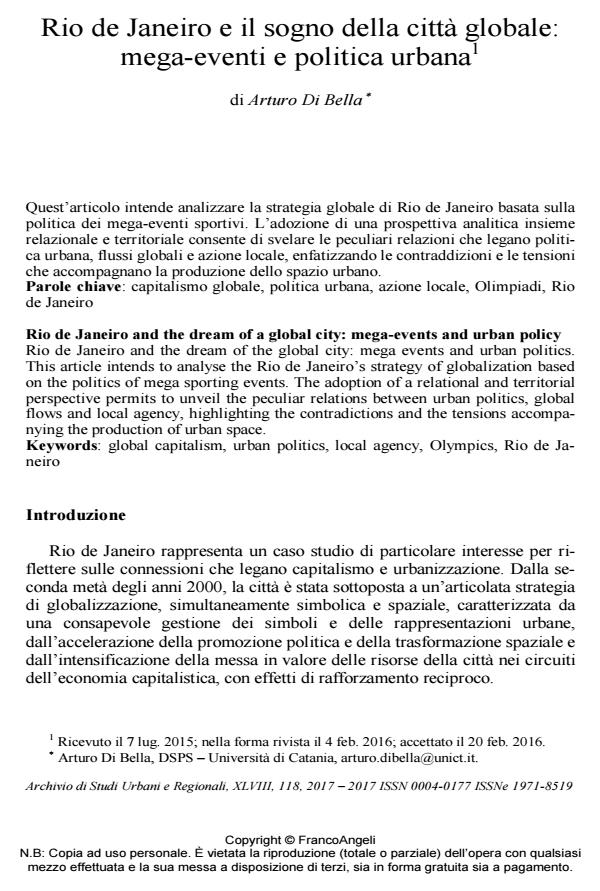Rio de Janeiro and the dream of a global city: mega-events and urban policy
Journal title ARCHIVIO DI STUDI URBANI E REGIONALI
Author/s Arturo Di Bella
Publishing Year 2017 Issue 2017/118
Language Italian Pages 22 P. 97-118 File size 122 KB
DOI 10.3280/ASUR2017-118005
DOI is like a bar code for intellectual property: to have more infomation
click here
Below, you can see the article first page
If you want to buy this article in PDF format, you can do it, following the instructions to buy download credits

FrancoAngeli is member of Publishers International Linking Association, Inc (PILA), a not-for-profit association which run the CrossRef service enabling links to and from online scholarly content.
Rio de Janeiro and the dream of the global city: mega events and urban politics. This article intends to analyse the Rio de Janeiro’s strategy of globalization based on the politics of mega sporting events. The adoption of a relational and territorial perspective permits to unveil the peculiar relations between urban politics, global flows and local agency, highlighting the contradictions and the tensions accompanying the production of urban space.
Keywords: Global capitalism, urban politics, local agency, Olympics, Rio de Janeiro
Arturo Di Bella, Rio de Janeiro e il sogno della città globale: mega-eventi e politica urbana in "ARCHIVIO DI STUDI URBANI E REGIONALI" 118/2017, pp 97-118, DOI: 10.3280/ASUR2017-118005